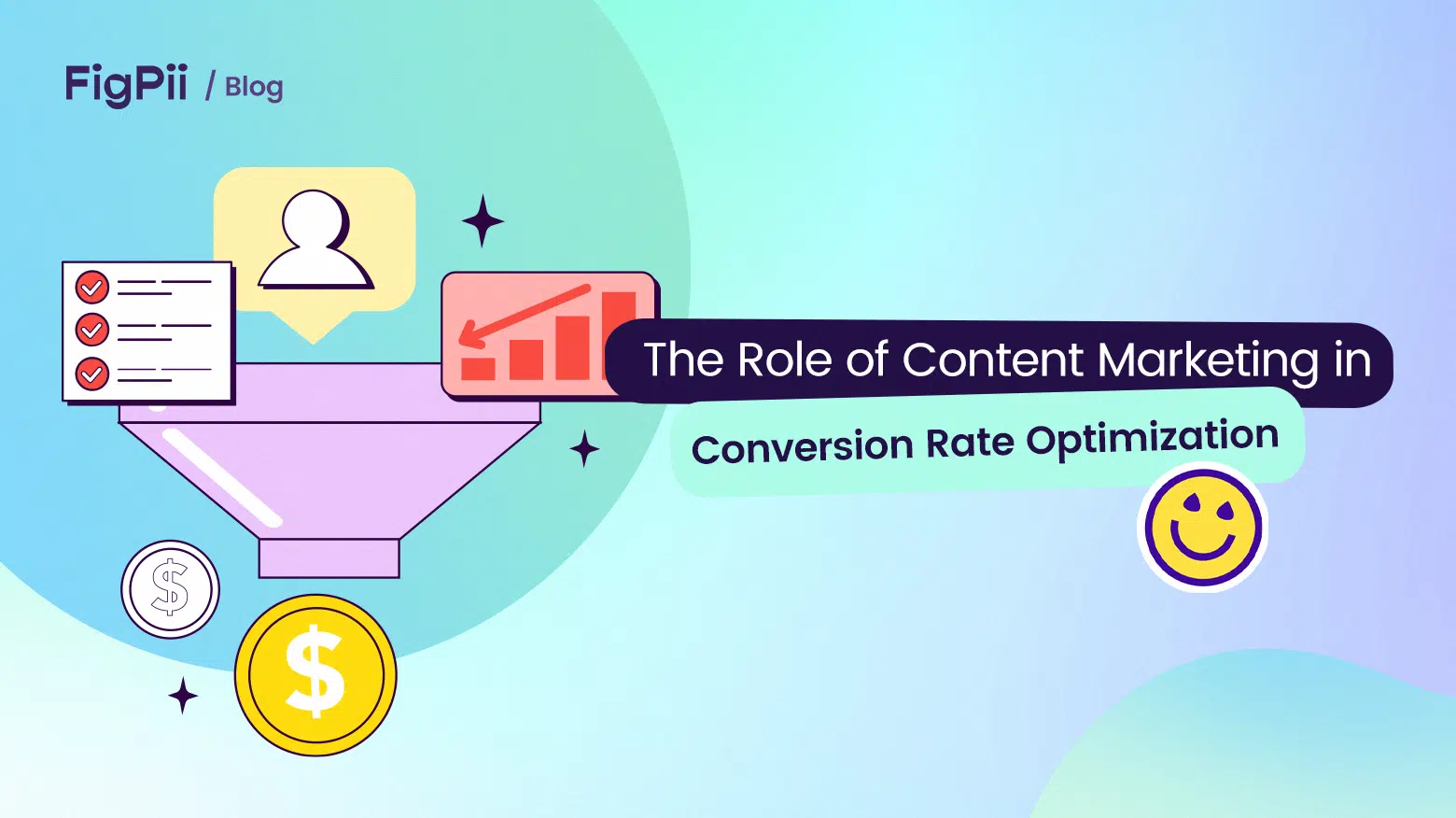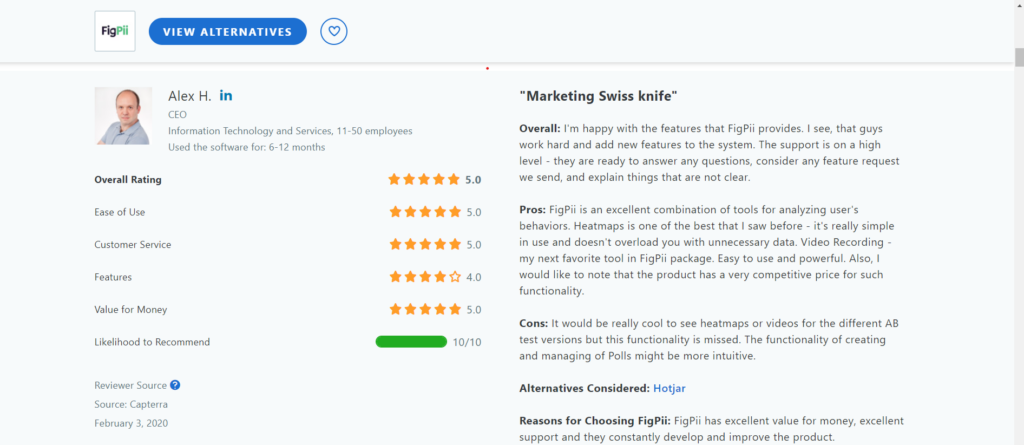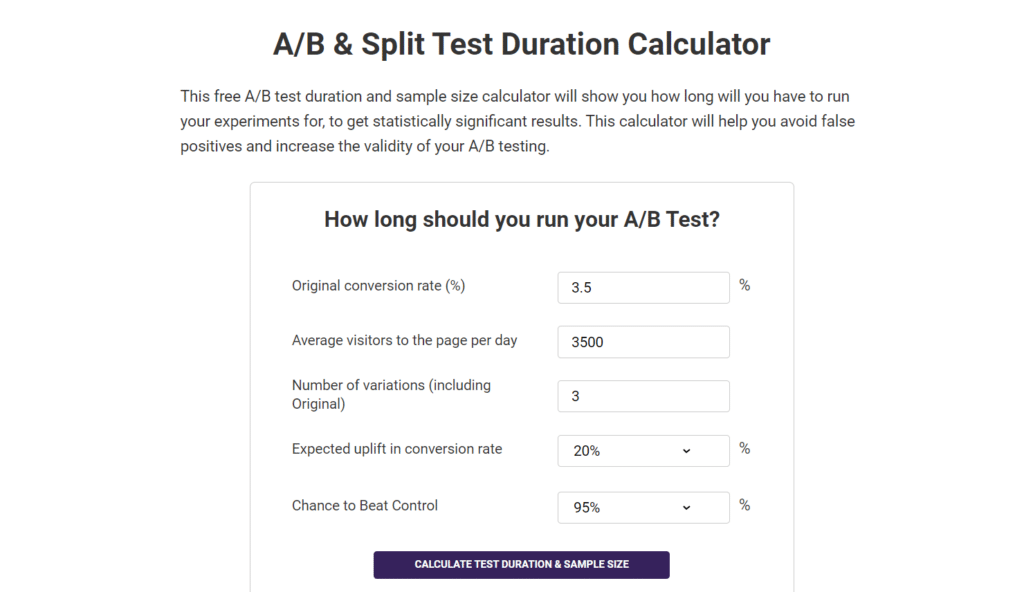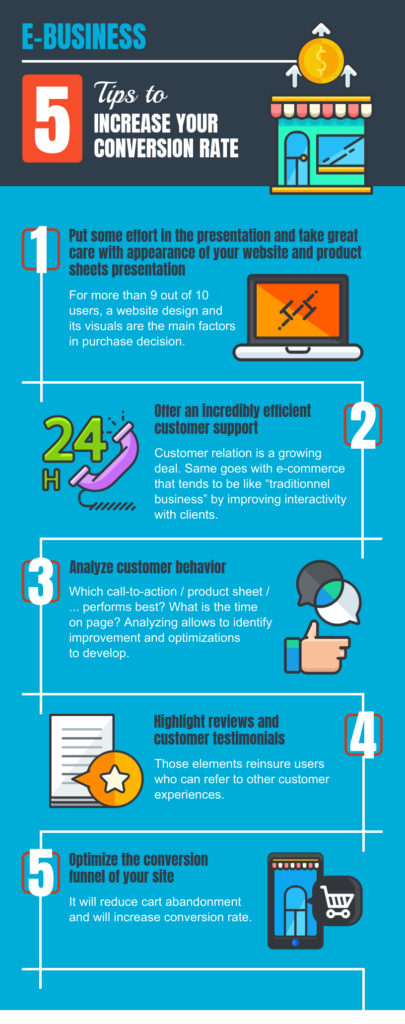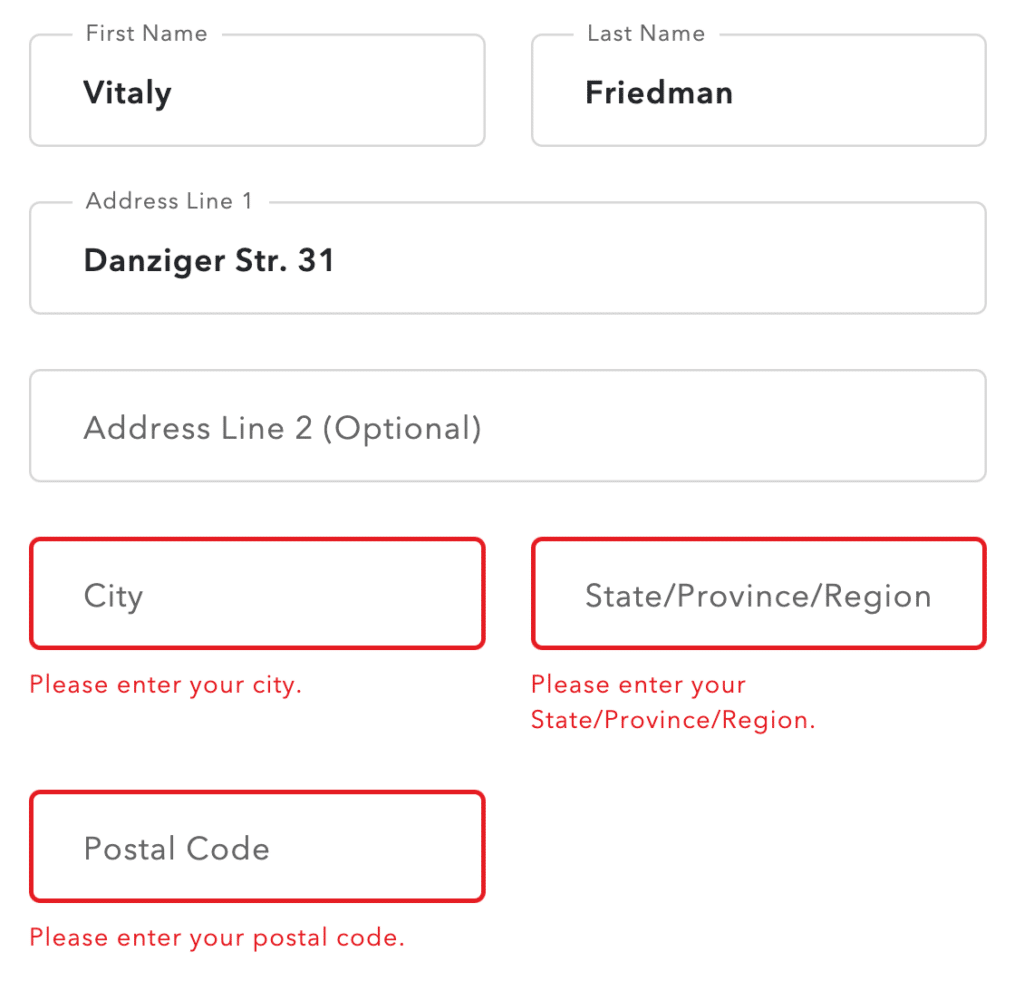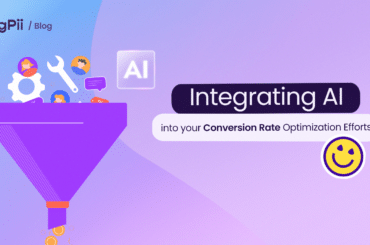Conversion Rate Optimization, if executed appropriately, is an effective strategy for businesses aiming to maximize their online potential. At its core, CRO is about fine-tuning your website and content to convert more visitors into customers. It’s not just about driving traffic; it’s about making that traffic count.
On the other hand, content marketing is a strategic approach in digital marketing focused on creating and distributing valuable, relevant, and consistent content to attract and retain a clearly defined audience — and, ultimately, to drive profitable customer action.
Whether signing up for a newsletter, downloading a guide, or purchasing, well-crafted content guides potential customers from interest to decision.
This article focuses on how content marketing and CRO work together. We’ll explore strategies for using content to attract visitors and convert them.
Integrating Content Marketing with CRO
Content marketing and Conversion Rate Optimization are closely linked in their shared goal of driving meaningful actions from website visitors.
When content marketing strategies are aligned with CRO objectives, the content does more than just attract attention; it becomes a guiding force, leading visitors through a journey that ends in conversion.
This integration ensures that every content serves a specific purpose in the conversion funnel, making it a powerful tool for achieving business goals.
Importance of aligning content marketing strategies with CRO objectives
- Targeted Engagement: Content tailored to the audience’s interests and stage in the buying journey keeps them engaged and moving toward conversion.
- Relevance and Personalization: Aligning content with CRO allows for content that resonates more personally with users, increasing the likelihood of conversion due to its relevance.
- Driving Qualified Traffic: Quality content optimized for both users and search engines attracts traffic that is more likely to be genuinely interested in your offerings.
- Informed Strategy Through Data: Integrating content marketing with CRO involves using analytics to understand user behavior, allowing for content strategies that are continuously refined and improved.
- Efficient Use of Resources: Focusing on creating content that converts leads to a more efficient use of marketing resources, maximizing the return on investment.
Content Marketing Strategies for CRO
In optimizing conversion rates, content marketing emerges as a key player. Effective content marketing strategies can significantly enhance your CRO efforts, turning casual browsers into committed customers.
Let’s explore specific strategies that effectively contribute to CRO.
-
Creating Targeted and Relevant Content
Creating targeted and relevant content goes beyond merely producing content to fill web pages; it’s about crafting content that speaks directly to your specific audience’s needs, interests, and challenges.
And how do you do that?
-
Understand Your Audience
The first step in creating targeted content is deeply understanding your audience. This involves segmenting your audience based on various criteria such as demographics, behavior, and how they interact with your brand.
Use tools and data analytics to gather insights about your audience’s preferences, pain points, and the type of content they consume. Surveys, social media interactions, and customer feedback can also provide valuable information about what your audience truly cares about.
-
Address Pain Points
Once you understand your audience, tailor your content to address their pain points and challenges. This means identifying their problems and presenting your product or service as the solution.
Content that effectively addresses pain points attracts the right audience and positions your brand as an authority that understands and can solve their problems. This approach builds trust and credibility, which are crucial for converting visitors into customers.
-
Personalize the Content Experience
Personalization can significantly increase the relevance of your content. Use data to personalize content experiences based on the user’s past interactions with your brand, their location, or stage in the buyer’s journey.
Personalized content recommendations, emails, and offers can significantly enhance engagement and guide users toward conversion.
-
Measure and Refine
Finally, continuously measure the performance of your content to understand what resonates with your audience. Use analytics to track engagement metrics, conversion rates, and the ROI of your content marketing efforts.
Based on these insights, refine and adjust your content strategy to focus on what works best for driving conversions.
-
Optimizing Content for Search Engines
Optimizing content for search engines ensures that your content reaches a broader audience and attracts visitors actively searching for solutions your business offers.
To optimize your content for search engines, you should do the following;
-
Conduct Thorough Keyword Research
Understanding what your audience is searching for is the first step. Utilize tools like Google Keyword Planner, SEMrush, or Ahrefs to dive into search volumes, competition levels, and related queries. This research helps pinpoint the exact terms and phrases your potential customers use, ensuring your content aligns with their search intent.
-
Incorporating Keywords Naturally
Beyond identifying the right keywords, it’s essential to weave them into your content, titles, and meta descriptions naturally. This practice ensures that your content remains relevant and easily discoverable by your target audience, enhancing its reach and ability to drive conversions.
-
User-Friendly Website Structure
A website that’s easy to navigate and quick to load is not just user-friendly—it’s also SEO-friendly. Ensuring your site is optimized for fast loading times and mobile users enhances the overall user experience, a critical factor in retaining the audience and improving search engine rankings.
-
Utilize User-Generated Content
Utilizing user-generated content (UGC) is a dynamic strategy that amplifies your Conversion Rate Optimization efforts. UGC, which includes reviews, testimonials, photos, videos, and social media posts created by your customers, serves as authentic proof of your brand’s value and reliability.
Here’s how leveraging UGC can enhance your content marketing strategy and drive conversions:
-
Foster a Community Around Your Brand
Encourage your customers to share their experiences with your product or service. This can be facilitated through social media campaigns, contests, or asking for their feedback and stories.
Showcasing real-life applications of your products validates their effectiveness and builds a sense of community and trust around your brand.
-
Highlight Customer Testimonials and Reviews
Testimonials and reviews are powerful forms of UGC that directly influence potential customers’ purchasing decisions.
Feature them prominently on your website, product pages, and social media platforms. This serves as social proof and addresses new customers’ concerns or questions, guiding them closer to conversion.
-
Leverage Visual UGC in Your Marketing
Photos and videos shared by customers using your products or services in real-world settings can be incredibly persuasive. They provide tangible evidence of your product’s value and how it fits into customers’ lives. Incorporate this visual UGC into your website galleries, product pages, or advertising campaigns to enhance credibility and appeal.
-
Create a Feedback Loop
Use UGC as a tool for continuous improvement. Whether positive or negative, customer feedback offers invaluable insights into what your audience appreciates most about your product or service and areas where there’s room for enhancement.
This feedback loop can inform your product development and content strategy, ensuring both are aligned with customer needs and expectations.
-
Interactive Content for Engagement
Interactive content is a dynamic form that includes quizzes, polls & surveys, calculators, and interactive infographics. It does more than just present information; it actively involves users in a personalized experience, fostering engagement and guiding them closer to conversion actions.
Here’s how leveraging interactive content can significantly boost your CRO efforts:
-
Boost Engagement with Quizzes and Polls
Quizzes and polls are not just entertaining; they’re powerful tools for engagement. By inviting users to participate in a quiz related to your product or industry, you capture their attention and gather valuable data about their preferences and needs.
This engagement keeps users on your site longer and can provide insights that guide them toward relevant products or services, increasing the likelihood of conversion.
-
Simplify Complex Decisions with Calculators
Calculators, especially for finance, health, or real estate industries, can help users make complex decisions easier. By inputting their data and receiving personalized results, users can see the value of your offerings in real time.
This direct interaction with your content increases engagement and builds trust in your brand’s expertise and solutions, nudging users toward conversion.
-
Enhance Understanding with Infographics
Interactive infographics turn static data into an engaging story. Users can click, hover, or scroll to discover information, making learning more engaging.
This format is particularly effective for breaking down complex information or data, making it accessible and exciting. By enhancing users’ understanding of a topic related to your products or services, you’re more likely to keep them engaged and move them toward a conversion.
-
Personalize the User Experience
Interactive content can be tailored to deliver personalized experiences based on user inputs. For example, a skincare brand might offer a quiz that recommends products based on the user’s skin type and concerns. This personalization makes the content more relevant and valuable to the user, increasing the chances of conversion.
-
Optimizing Form Pages
Forms are the gateways through which visitors provide information, turning them from anonymous browsers into leads or customers.
A well-optimized form can significantly reduce friction in the conversion process, encouraging more users to complete it. Here’s how to ensure your form pages are optimized for maximum conversion:
-
Simplify the Form Design
Keep your forms as simple as possible. Each additional field can increase the effort required from users, potentially deterring them from completing the form.
Analyze which information is essential for your goals and limit the fields to this necessary data. Simplification also applies to the form’s layout; a clean, uncluttered design helps users complete it more quickly and efficiently.
-
Use Clear and Encouraging Language
The language on your form page, including the instructions, field labels, and submission button, should be clear and motivating.
Instead of generic language like “Submit,” use action-oriented phrases that convey the benefit of completing the form, such as “Get Your Free Guide” or “Join Our Community.”
This positive framing helps reinforce the value of what the user will receive in exchange for their information.
-
Implement Field Validation and Helpful Error Messages
Real-time field validation helps users correct errors as they fill out the form, such as incorrectly formatted email addresses.
If a user submits a form with errors, ensure your error messages are helpful and specific, guiding them on how to fix the issue. This reduces frustration and helps prevent users from abandoning the form due to confusion or errors.
-
Optimize for Mobile Users
With increasing numbers of users accessing content via mobile devices, your form must be mobile-friendly. This means large, easily clickable fields, responsive design that adjusts to various screen sizes, and minimal text entry. Optimizing for mobile ensures the form-filling experience is seamless, regardless of the device used.
-
Test and Refine Continuously
Use A/B testing to experiment with different versions of your form pages. Test variations in the number of fields, the layout, the language used, and even the color of the submission button.
Analyze the performance of each version to identify what works best in driving conversions. Continuous testing and refinement are key to maintaining an optimized form page that consistently converts visitors into leads or customers.
Measuring the Impact of Content Marketing on CRO
To truly optimize conversion rates, measuring how content marketing efforts influence those rates is essential. This isn’t about tracking metrics in isolation but understanding how they directly relate to and impact your conversion rates.
Let’s delve into how to effectively connect these metrics and KPIs with your content marketing’s influence on conversions and refine your strategies for better outcomes.
Key Metrics and KPIs
-
Conversion Rate
This metric is pivotal in evaluating the effectiveness of your content. A high conversion rate from a specific piece of content signals its success in compelling visitors to take the desired action, directly linking content quality and relevance to CRO success.
-
Bounce Rate
Analyzing the bounce rate in the context of content marketing offers insights into whether your content meets the audience’s expectations. A lower bounce rate on content pages suggests that visitors find your content engaging and are more likely to explore further, increasing the opportunities for conversion.
-
Time On Page
The time visitors spend on your content pages can indicate the content’s ability to engage and hold their interest. Longer engagement times often correlate with a higher likelihood of taking a conversion action, highlighting the content’s role in the conversion pathway.
-
Click-through Rate
Click-through Rate measures the effectiveness of your CTAs within the content. A high CTR indicates that your content successfully encourages visitors to move closer to conversion, showcasing the direct impact of compelling content and CTAs on conversion.
-
Lead Generation Metrics
For content that generates leads, tracking the number of leads and the conversion rate from lead to customer reveals how well your content nurtures potential customers through the sales funnel.
Effective content marketing strategies should lead to an increase in qualified leads and a higher conversion rate, demonstrating content’s role in driving conversion.
Conclusion
Let’s get straight to the point: integrating content marketing into your conversion rate optimization strategies is not just beneficial; it’s essential. It’s about making every piece of content work harder for you, turning visitors into leads and leads into paying customers. As you move forward, consider content marketing your tool for higher conversion rates.
Embrace the power of well-crafted content. Use it to engage, inform, and persuade your audience. Remember, every article, video, or social media post is an opportunity to move someone closer to a conversion. So, take a moment to review your content strategy through the lens of CRO. Are you making the most of every piece of content?

